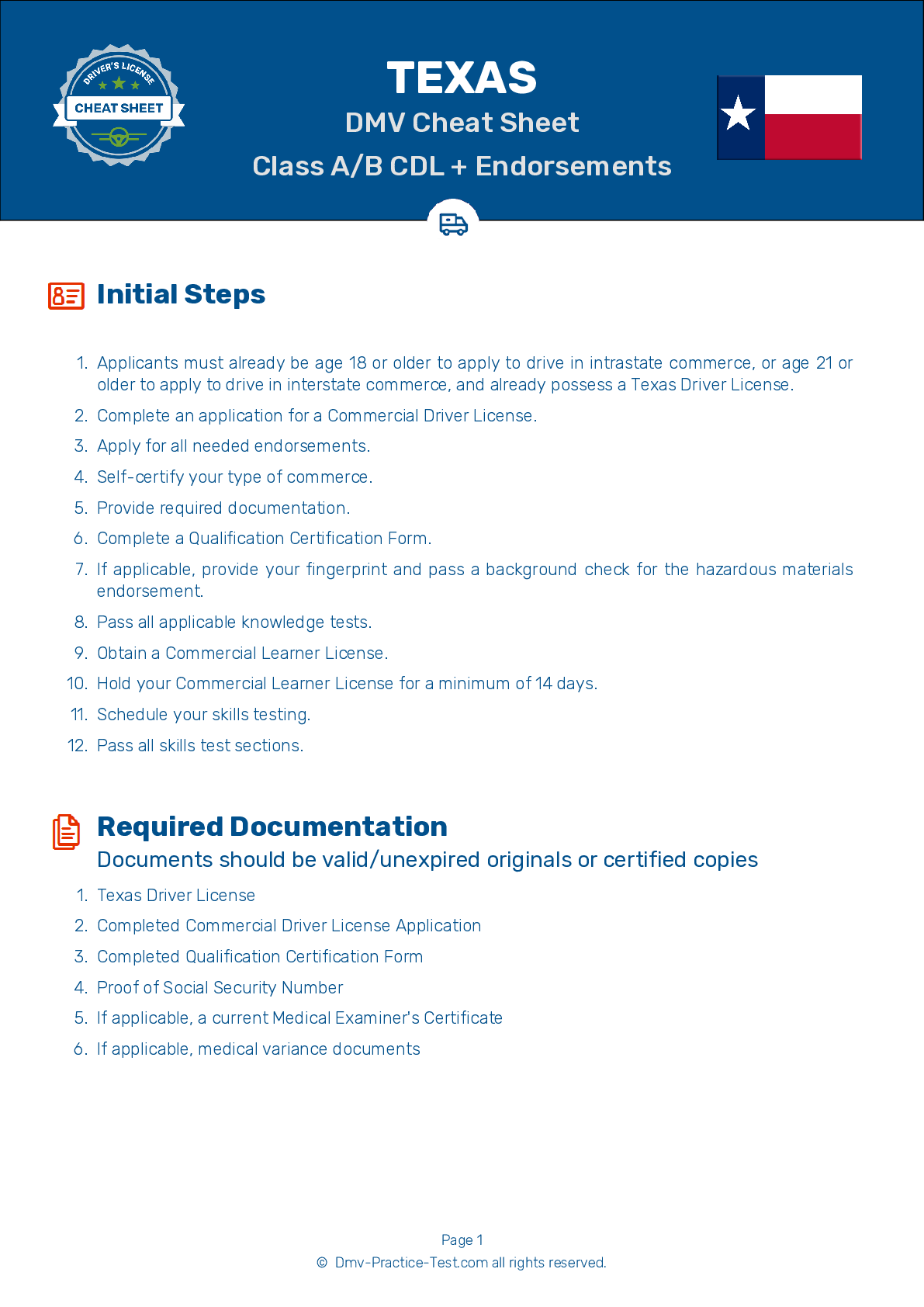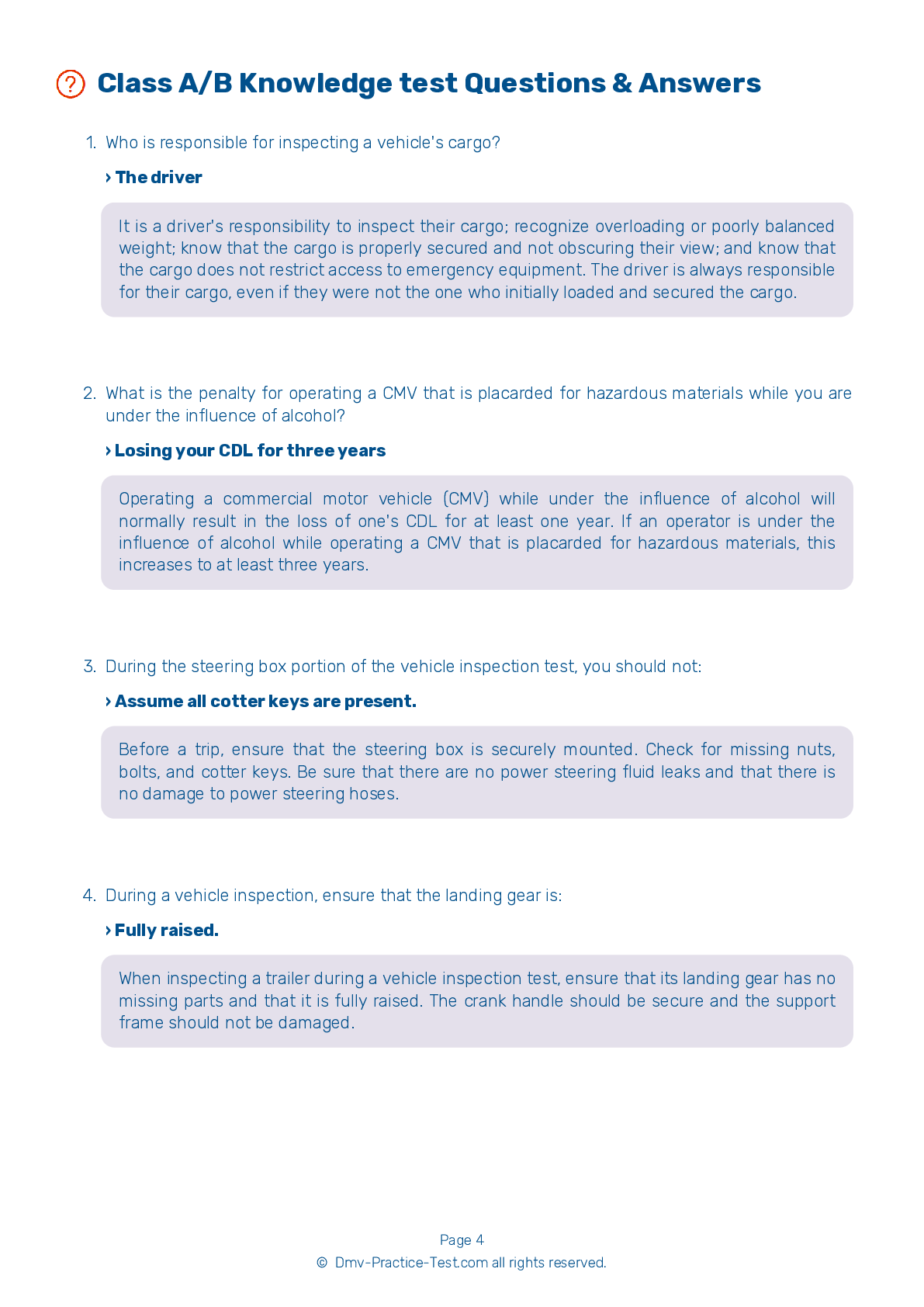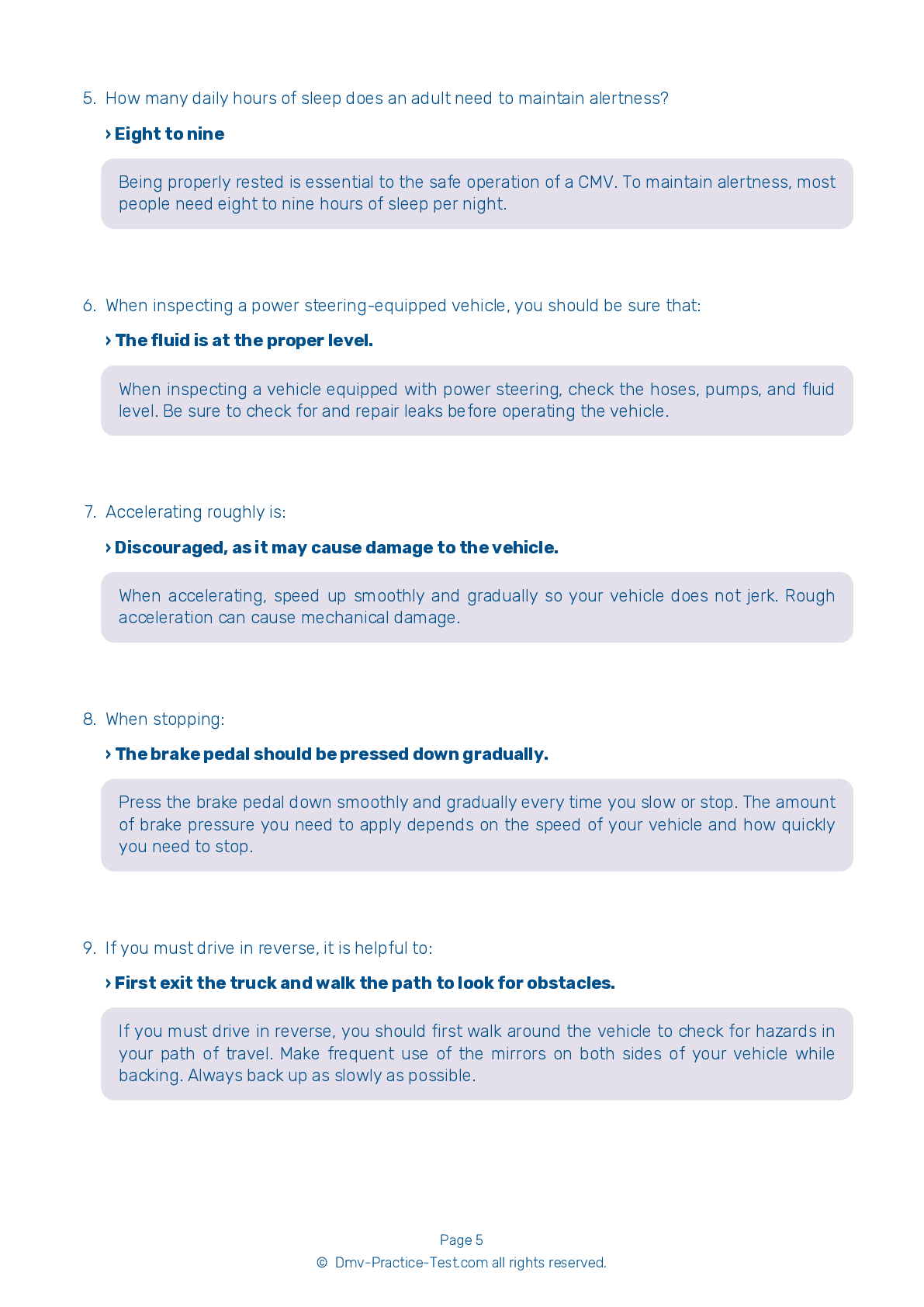Passenger #1
Passenger Endorsement | Texas 2026 #1 Page 2 of 3
Train for FREE with our Texas CDL passenger endorsement practice test online. The official exam test consists of several obligatory parts, with all of them checking your knowledge of different blocks of road rules. If you need to obtain a TX DMV passenger endorsement in 2026, practice as much as possible. Free sample tests published on our website will help you check and improve your knowledge and boost your grades. Please bear in mind that DMV requirements for issuing a CDL permit with passenger endorsement may vary from state to state.
20
16
22
8 . During a vehicle inspection, ensure that lug nuts are all of the following, except:
Free of rust.
During a vehicle inspection test, you must ensure that all lug nuts are present, free of cracks and distortions, and showing no signs of looseness, such as rust trails or shiny threads. Verify that all bolt holes are free of cracks and distortions.
9 . If confronted by an aggressive driver, you should:
All of the above.
If confronted by an aggressive driver, the most important thing to do is try to get out of their way. Avoid making eye contact with the driver and do not let yourself be provoked by gestures. Do not try to challenge aggressive drivers by speeding up.
10 . Which items are always prohibited in the part of a bus that is occupied by people?
Oxygen tanks
Buses are permitted to carry small arms ammunition labeled ORM-D, emergency hospital supplies, and drugs. Small amounts of other hazardous materials may also be carried on a bus if there is no other way for the shipper to send them. However, some specific materials may never be carried on a bus, such as labeled radioactive materials.
11 . Which of the following is not an activity that causes a distraction?
Checking your mirrors
Anything that takes your attention away from driving can be a dangerous distraction. This includes eating, drinking, smoking, or adjusting the vehicle's audio and climate controls.
12 . During the straight line backing exercise, how many times are you permitted to exit the vehicle to check its position?
Four times
During the straight line backing exercise, you are permitted to exit your vehicle to check its position no more than one time.
13 . When driving, your mirrors should:
Be checked regularly, but only if it is cloudy.
It is important for you to be aware of your surroundings at all times. To do this, regularly check your mirrors.
14 . If driving in a foggy area, you should not:
Turn on your four-way flashers.
It is safest not to drive in foggy areas. However, if you must drive through fog, you should slow down, use your low beam headlights and fog lights, and turn on your four-way flashers.
2026 Texas | Frequently Asked Questions
To acquire a CDL Hazmat endorsement in Texas, you must first have a Commercial Driver's License (CDL). Then, pass the Hazardous Materials Endorsement Knowledge Test at a Texas Department of Public Safety office. After passing, you'll need to undergo a TSA background check. Once cleared, the endorsement will be added to your CDL.
To obtain a CDL Hazmat license, you must first hold a valid Commercial Driver's License (CDL). You must be at least 21 years old and have a clean driving record. You'll also need to pass the Hazardous Materials Endorsement Knowledge Test and undergo a TSA background check. Good vision and physical health are also prerequisites.
When applying for a CDL Hazmat endorsement, you will need your current CDL, proof of U.S. citizenship or legal status (like a birth certificate or green card), and proof of identity and Texas residency. You'll also need your Social Security card and a completed Application for Texas Driver License or Identification Card. Lastly, you'll need to pass a TSA background check.
Yes, there is a dedicated written test for the CDL Hazmat endorsement. Called the Hazardous Materials Endorsement Knowledge Test, it covers topics like loading and unloading hazardous materials, bulk packaging marking, driving and parking rules, and emergency response procedures. This test must be passed to obtain the Hazmat endorsement.
The written test for the CDL Hazmat endorsement covers a range of subjects related to hazardous materials. These include recognizing hazardous materials, safe loading and unloading procedures, proper use of placards and labels, emergency response procedures, driving and parking rules for hazardous materials, and understanding the associated risks and regulations.
Yes, acquiring a CDL Hazmat endorsement comes with additional charges. These include a fingerprinting fee for the required TSA background check, and an endorsement fee. The exact costs can vary, so it's recommended to check with your local Department of Motor Vehicles (DMV) or similar agency for the most accurate information.
Yes, obtaining a CDL Hazmat endorsement requires a background check and security clearance. The Transportation Security Administration (TSA) conducts the check, which includes fingerprinting and a review of criminal, immigration, and terrorism records. This process is necessary to ensure the safety and security of hazardous materials transportation.
Yes, specialized training is required for the CDL Hazmat endorsement. Applicants must pass a written test, and in some cases, a driving test with a vehicle that carries hazardous materials. Once passed, this endorsement is added to your Commercial Driver's License (CDL). Regular renewal of this certification is also required.
No, you cannot legally transport hazardous materials without a valid Commercial Driver's License (CDL) with a Hazardous Materials (Hazmat) endorsement in the United States. This requirement ensures that drivers have the necessary training and knowledge to handle such materials safely, protecting public safety and the environment.
Yes, you can add the CDL Hazmat endorsement to your current CDL. You don't need to apply for a new CDL. However, you must pass the Hazmat knowledge test, undergo a TSA background check, and pay the required fees. Once completed, the endorsement will be added to your existing CDL.



